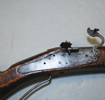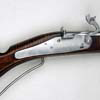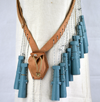The First Muster by renowned artist Don Troiani
America’s National Guard traces its militia origins back to December 13th, 1636, when the Massachusetts Bay Colony Charter was enacted. While colonies at Jamestown and Plymouth had earlier militias, the Massachusetts Bay Colony issued the first official governing document to order the mustering of militia. This colony was also unique from the other colonies, having sent an advance military party in 1628, which established their original trading post at Salem. In 1630, eleven ships filled with English Puritans arrived, and one of their first tasks was to form militia companies in Boston and Dorchester.
In the spring of 1631, the town of Newtowne was established as a fortified outpost of Boston, and tasked with maintaining and issuing muskets. On September 3, 1634, the governing court ordered that all muskets, bandeleros and muskets rests would be equally divided between the plantations and towns to have…at all times…arms in readiness for an attack. By the time their formal charter was enacted in 1636, The Massachusetts Bay Colony had ten organized militia companies with over 1500 men. Their law required all men, age 18 and older, to be armed and bring their muskets to church and public assemblies, as did the other American colonies of that era. These citizen-soldiers assembled after church and went through military drills known as musters. Later Massachusetts Bay Colony laws required that all children from 10 - 16 years of age be taught to use all available weapons of war.
The Newtowne Musket
 The primary firearms utilized by the colony were matchlock muskets they brought with them from Europe. Only one matchlock musket from the Massachusetts Bay colony can be found on public display in the United States. It is known as the “Newtowne Musket” and is the very first item in the permanent display on military history in the
Smithsonian’s American History Museum in Washington, DC.
The primary firearms utilized by the colony were matchlock muskets they brought with them from Europe. Only one matchlock musket from the Massachusetts Bay colony can be found on public display in the United States. It is known as the “Newtowne Musket” and is the very first item in the permanent display on military history in the
Smithsonian’s American History Museum in Washington, DC.
The Smithsonian’s weapon is a .75 caliber matchlock musket with the word “Newtowne” branded into the stock in three places, indicating it was from that colony. The Smithsonian dates their musket to 1636 because Newtowne changed its name to Cambridge in 1636, when Harvard University was founded there. The stock shape design is very unique and made of curly maple which is indigenous to the eastern coast of North America indicating American manufacture. The barrel is uniformly round, very thin, has a small breech diameter and is not finely finished or even throughout its length, indicating the weapon was not manufactured in Europe. The lock plate is possibly from another gun of European origin, but the cock and internals are clearly forged and rough finished by a different person other than the one who made the original lock plate. EANGUS and The Rifle Shoppe believe the original Newtowne Musket has more than enough qualifications to be considered one of the earliest surviving American-made muskets, as well as the earliest dateable gun assigned to a specific colony for use in an organized American militia. It can definitely be considered one of the first weapons manufactured on American soil.



